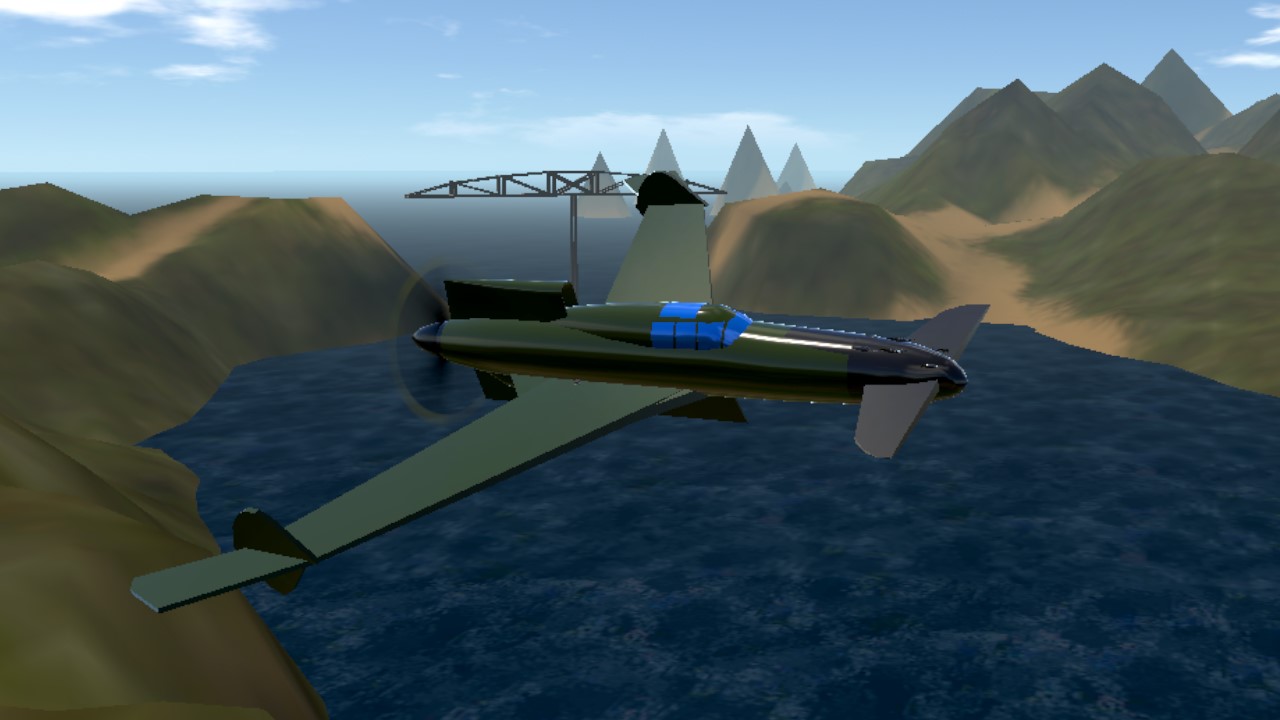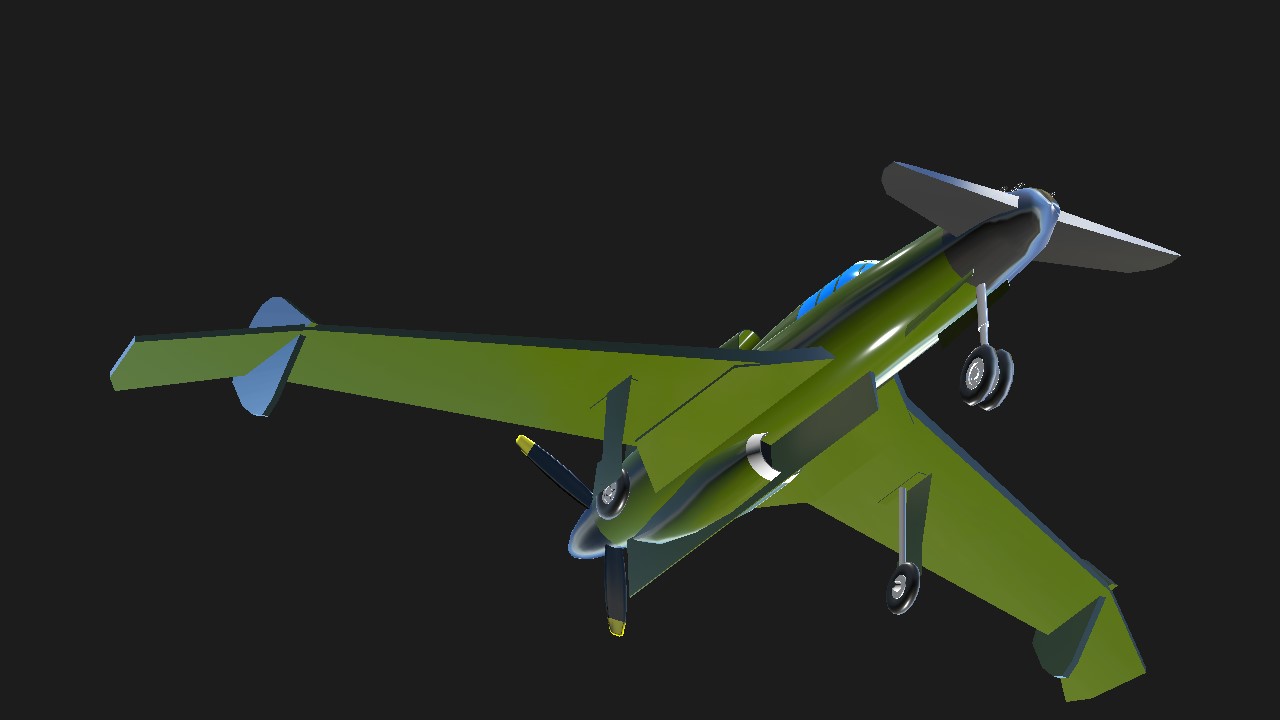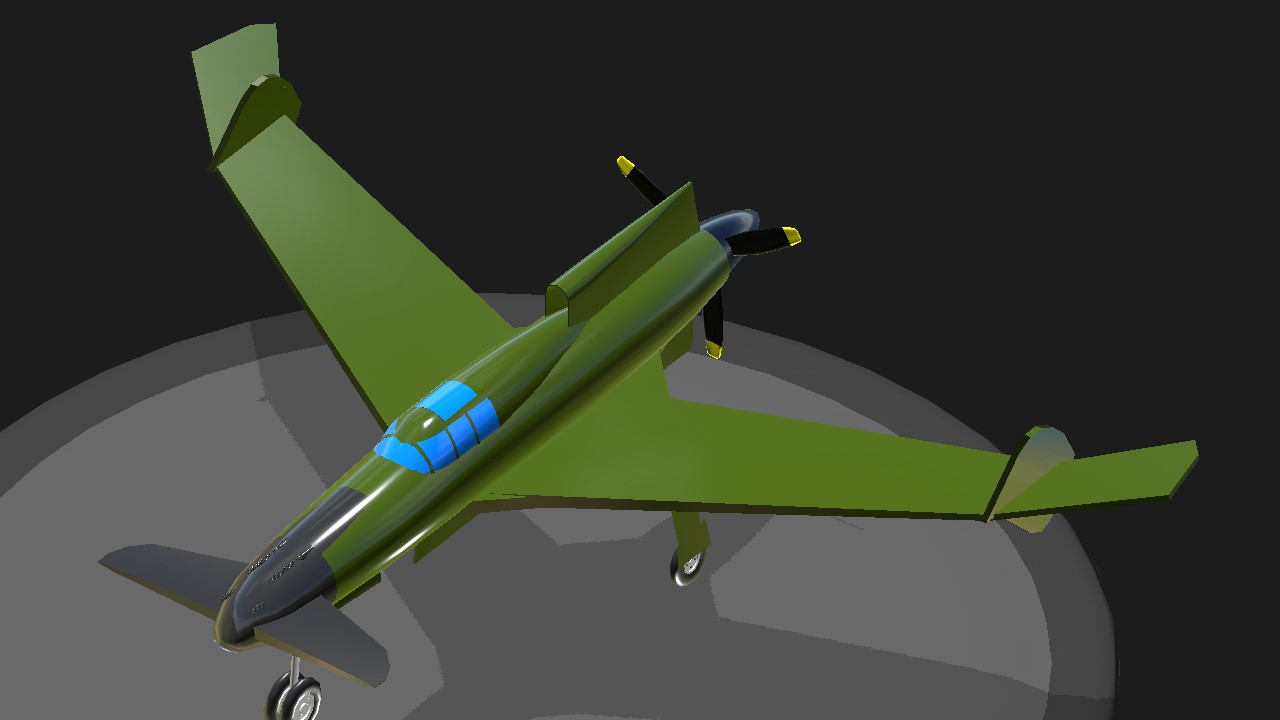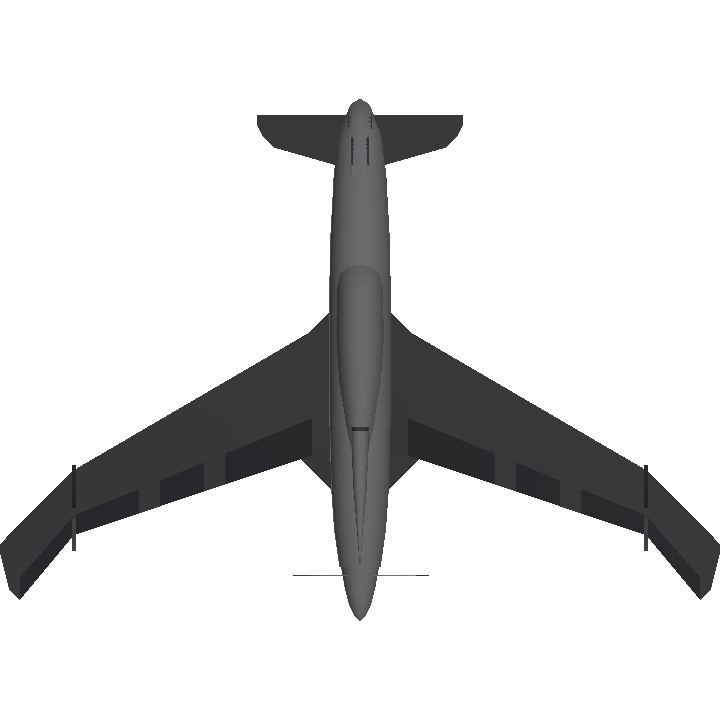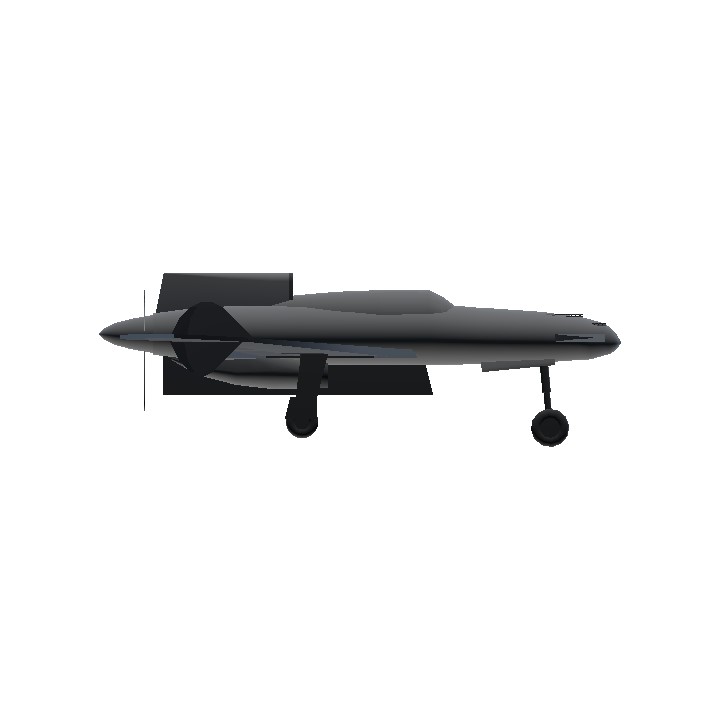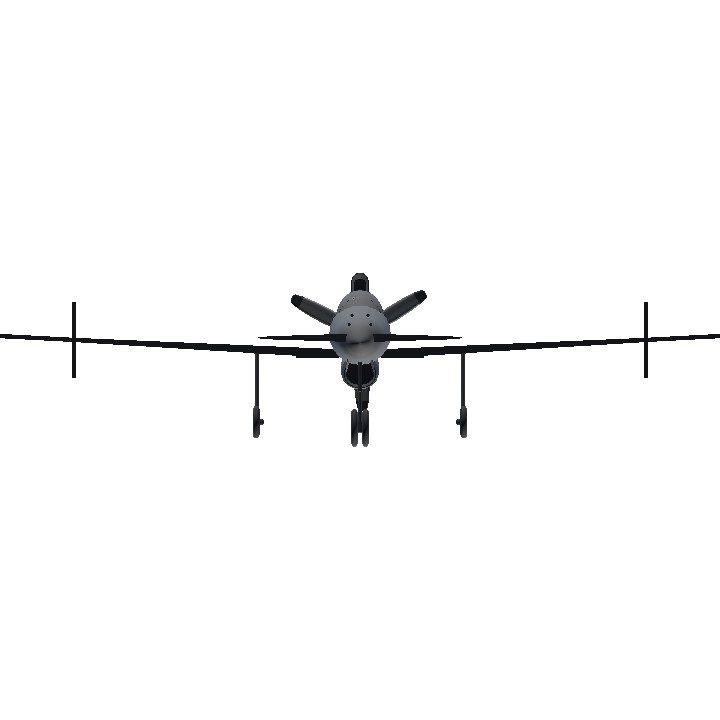plen:
The Curtiss-Wright XP-55 Ascender (company designation CW-24) is a 1940s United States prototype fighter aircraft built by Curtiss-Wright. Along with the Vultee XP-54 and Northrop XP-56, it resulted from United States Army Air Corps proposal R-40C issued on 27 November 1939 for aircraft with improved performance, armament, and pilot visibility over existing fighters; it specifically allowed for unconventional aircraft designs. An unusual design for its time, it had a canard configuration with a rear-mounted engine, and two vertical tails at end of swept wings. Because of its pusher design, it was satirically referred to as the "Ass-ender".[1] Like the XP-54, the Ascender was designed for the 1,800 hp Pratt & Whitney X-1800 24-Cylinder H-engine, but was redesigned after that engine project was canceled. It was also the first Curtiss fighter aircraft to use tricycle landing gear.
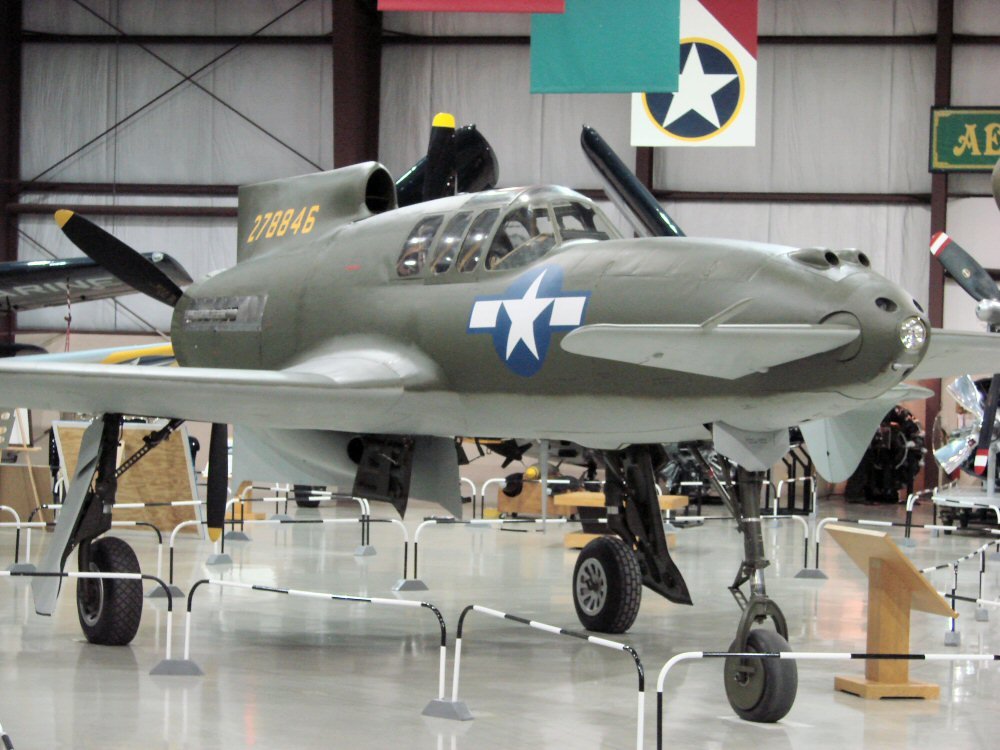
operational history
Three XP-55 prototypes were built. Two were destroyed during flight testing, as a result of their propensity for sudden wing stalls.
The first XP-55 (42-78845) was completed and delivered on 13 July 1943, with the same configuration as the final prototype CW-24B. The aircraft made its first flight on 19 July 1943[3][8] from the Army's Scott Field near the Curtiss-Wright plant in St Louis, Missouri.[7] The pilot was J. Harvey Gray,[3] Curtiss' test pilot. Testing revealed the takeoff run was excessively long. To solve this problem, the nose elevator size was increased and the aileron up-trim was interconnected with the flaps so it operated after the flaps were lowered.[7]
In 15 November 1943, test pilot Harvey Gray, flying the first XP-55 (S/N 42-78845), was testing the aircraft's stall performance at altitude. Suddenly, the XP-55 inverted into an uncontrolled descent. The engine failed "making recovery impossible"[2] and it fell out of control for 16,000 ft (4,900 m) before Gray was able to parachute to safety. The aircraft was destroyed and "left a smoking hole in the ground".[4][7]
The second XP-55 (serial 42-78846) was similar to the first, but with a slightly larger nose-elevator,[7] modified elevator-tab systems, and a change from balance tabs to spring tabs on the ailerons. It flew for the first time on 9 January 1944.[4][7] All flight tests were restricted so the stall-zone was avoided; included no stalling below 20,000 ft.[5][7][9]
The third XP-55 (serial 42-78847) flew for the first time on 25 April 1944. Modifications resulting from the investigation of the crash of the first prototype were introduced during construction; the addition of four-foot wingtip extensions to improve the stall characteristics and increasing the limits of the nose elevator travel to improve recovery if a stall did occur.[2] It was the only prototype to be fitted with armament - four 0.5-inch machine guns.[5]
After the second XP-55 (42-78846) was given the same modifications as the third prototype, it underwent official USAAF flight trials between 16 September and 2 October 1944.
The third prototype XP-55 (s/n 42-78847) was lost on 27 May 1945, during the closing day of the Seventh War Bond Air Show at the Army Air Forces Fair at Wright Field in Dayton, Ohio.[7][10] After a low pass in formation with a Lockheed P-38 Lightning and a North American P-51 Mustang[7] on each wing, its pilot, William C. Glasgow, attempted a slow roll,[7] but lost altitude and crashed, sending flaming debris into occupied civilian ground vehicles on a highway near the airfield. The crash killed Glasgow and four civilians on the ground.[7][11]
In test flights the XP-55 achieved 390 mph at 19,300 feet but there were engine cooling problems.[2] In terms of overall performance, testing of the XP-55 revealed it to be inferior to conventional fighter aircraft.[4][7][12] In addition, by the end of 1944, German and British jet-powered fighters were fully operational, and the Lockheed XP-80 was about to commence operational trials with USAAF units in Italy. Development of completely new piston-engine fighter designs was regarded as redundant; further development of such aircraft was terminated, including the XP-55.
Specifications
General Characteristics
- Created On Android
- Wingspan 54.6ft (16.6m)
- Length 39.7ft (12.1m)
- Height 13.3ft (4.0m)
- Empty Weight 8,630lbs (3,914kg)
- Loaded Weight 12,839lbs (5,824kg)
Performance
- Horse Power/Weight Ratio 0.194
- Wing Loading 19.3lbs/ft2 (94.4kg/m2)
- Wing Area 664.0ft2 (61.7m2)
- Drag Points 4051
Parts
- Number of Parts 98
- Control Surfaces 16
- Performance Cost 477

